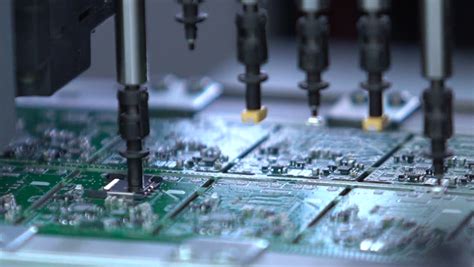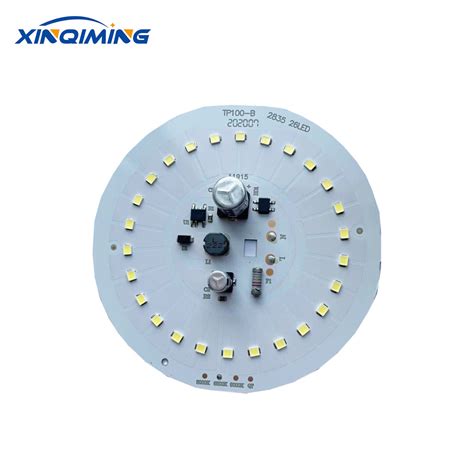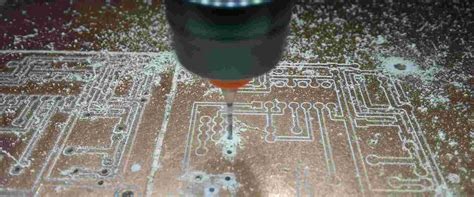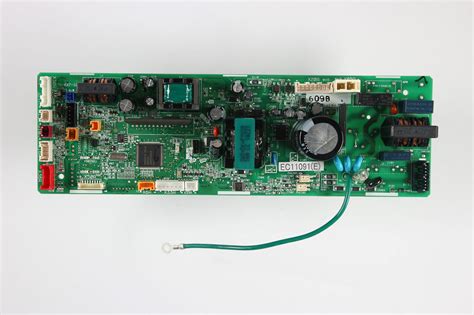Unlocking Innovation: The Ultimate Guide to Custom PCB Fabrication
Key Takeaways
When engaging in custom PCB fabrication, it’s essential to grasp the fundamental concepts that govern the process. Understanding PCB manufacturing begins with recognizing how crucial it is to choose pcb manufacturing companies that align with your project needs. As you embark on this journey, keep in mind that the pcb manufacturing cost is not solely determined by materials but also by complexity and design specifications. This means that careful planning and a clear understanding of your requirements can lead to more cost-effective solutions. The pcb manufacturing business landscape is vast, offering a variety of options, from small specialized firms to larger enterprises equipped for high-volume production. By researching and comparing these companies, you can select the one best suited to meet your criteria without compromising on performance or quality. Ultimately, being well-informed will empower you to make decisions that enhance your project’s outcomes while fostering innovation in your designs.
Understanding the Basics of Custom PCB Fabrication
Custom PCB fabrication is at the heart of modern electronics, enabling you to tailor circuit boards to meet your specific project requirements. Understanding the fundamentals is crucial for anyone engaged in this field. At its core, PCB manufacturing involves designing a layout that defines how electrical components connect on a printed circuit board. This process begins with selecting appropriate materials, which can significantly impact both the performance and cost-effectiveness of your project. Different pcb manufacturing companies utilize various techniques to fabricate PCBs, such as etching and solder masking, each with its unique advantages.
The pcb manufacturing cost often fluctuates based on these factors—size, complexity, and materials chosen are just a few elements affecting overall expenses. When planning your pcb manufacturing business, it’s essential to factor in not just the units produced but also the labor and technology investments needed to maintain high-quality standards. A focused understanding of these basics will empower you to make informed decisions, ensuring that your projects are built on a strong foundation.
“Quality PCB fabrication is not just about assembly; it’s about precision and foresight.”
A well-structured approach to PCB fabrication not only meets industry demands but also fosters innovation within your projects. Understanding these essential principles will help you navigate the complexities associated with custom PCBs effectively.
Essential Steps in PCB Design
Designing a printed circuit board (PCB) requires you to follow a systematic approach to ensure functionality, reliability, and efficiency. The first step is to clearly define the specifications of your project, which will dictate the type and layout of components. Using computer-aided design (CAD) software can significantly streamline this process, allowing you to visualize your design and make necessary adjustments easily.
Once you’ve settled on a design, the next essential aspect is understanding the pcb manufacturing processes that will be used. This stage involves choosing pcb manufacturing companies that align with your quality standards and budgetary constraints. When considering pcb manufacturing cost, it’s important to factor in not just the initial expenditure but also any potential savings from selecting high-quality materials that can enhance durability and performance. A well-planned design reduces errors during production, leading to consistent results.
As you progress, ensure that all components are properly placed according to best practices for electrical flow and physical space on the board. Additionally, keeping in mind the future scalability of your design will prove beneficial for potential upgrades or modifications as your project evolves. Ultimately, successful pcb manufacturing business relies heavily on meticulous planning and execution during this initial design phase, setting a strong foundation for effective product development.
Choosing the Right Materials for Your Project
When embarking on a journey in custom PCB fabrication, selecting the right materials is a pivotal step that can significantly influence your project’s success. The choice of substrates, solder mask, and copper thickness, among others, will impact the performance, durability, and overall cost of your PCB. Begin by identifying the pcb manufacturing requirements for your specific application; this may include considerations such as thermal conductivity, dielectric constant, and mechanical strength. For instance, materials like FR-4 are commonly used due to their balanced properties and cost-effectiveness. However, if you require higher performance for specialized applications, materials such as Rogers or polyimide might be necessary despite their higher costs.
Moreover, understanding the pcb manufacturing cost is crucial when deciding on materials. Working closely with reputable pcb manufacturing companies can offer insights into cost-effective solutions without compromising quality. Remember that choosing premium materials might increase your initial expenses but can lead to lower failure rates and enhanced reliability in the long run.
As you proceed with your pcb manufacturing business, prioritize open communication with material suppliers to discuss availability and lead times. Engaging early can help mitigate potential delays in production due to sourcing challenges. Always consider how your material choices align with sustainability goals as well; selecting eco-friendly options can also enhance your brand’s reputation in a competitive market.
Ultimately, taking a well-informed approach to material selection will empower you to create robust designs that meet both performance expectations and industry standards while effectively managing costs throughout the fabrication process. By investing time into understanding these aspects now, you position yourself for success throughout your project’s lifecycle. For more information on selecting quality materials for your PCB needs, check out resources from Andwin PCB.
Advanced Manufacturing Techniques in PCB Production
In the realm of custom PCB fabrication, adopting advanced manufacturing techniques is crucial for enhancing both the quality and efficiency of your projects. As you delve deeper into PCB manufacturing, understanding these techniques can significantly impact your design workflow and product outcomes. Techniques such as laser etching provide precision not achievable through traditional methods, ensuring that your designs are executed with exceptional accuracy. Likewise, Automation plays a vital role in modern PCB manufacturing companies, streamlining processes and reducing human errors.
Integrating these technologies can help you optimize the overall PCB manufacturing cost while maintaining high standards of performance and reliability. For instance, implementing additive manufacturing methods enables you to produce complex geometries that set your products apart from competitors, thus fostering innovation within your PCB manufacturing business. Additionally, employing techniques such as surface mount technology (SMT) allows for higher component density on boards, which not only saves space but also enhances functionality. With a keen focus on these advanced capabilities, you can better position yourself in an ever-evolving market, empowering your designs to meet the demanding requirements of today’s technological landscape.
Prototyping: From Concept to Completion
Prototyping is a pivotal stage in the custom PCB fabrication process, transforming your initial ideas into tangible solutions. At this phase, you focus on validating your design through the creation of a prototype to ensure that it meets all specified requirements. This hands-on approach allows you to assess the effectiveness of your design and make necessary adjustments before committing to full-scale pcb manufacturing. By engaging with pcb manufacturing companies, you can tap into their expertise and access advanced tools that streamline this process, making it easier for you to explore different configurations and functionality.
When considering pcb manufacturing cost, it’s essential to factor in not just materials but also the labor and time required for prototyping. Developing a prototype might seem like an added expense initially, but it ultimately serves as an investment; by identifying and resolving issues early, you can significantly reduce costs in later production stages. In essence, efficient prototyping sets the stage for a successful pcb manufacturing business, ensuring that your final product is not only innovative but also adheres to industry standards and client expectations.
Through iteration and meticulous testing of your prototypes, you gain valuable insights that inform final design tweaks while optimizing performance. This iterative cycle allows engineers like yourself to innovate with confidence, employing modern techniques that enhance effectiveness and accuracy in custom pcb fabrication. Each iteration brings you closer to realizing your vision, elevating your project from concept right through to completion.
Cost-Effectiveness in Custom PCB Fabrication
When you embark on a project that involves custom PCB fabrication, understanding the cost implications is crucial to maintaining financial viability. The pcb manufacturing cost can vary significantly based on several factors, including design complexity, material selection, and prototyping needs. By collaborating with reputable pcb manufacturing companies, you can gain insights into how to optimize your budget while still achieving high-quality results. One effective strategy is to focus on standardizing certain elements of your design, which can reduce both time and expense during production. Additionally, investing in advanced techniques within the pcb manufacturing business can lead to long-term savings through more efficient processes. It’s important to weigh the initial costs against potential benefits such as enhanced performance and durability. Ultimately, prioritizing cost-effectiveness in your custom PCB projects not only aids in budget management but also fosters a deeper level of innovation and creativity in your designs. By strategically planning every step from design through production, you can achieve a balance between cost and quality that meets both project goals and industry standards.
Quality Assurance and Testing Standards
In custom PCB fabrication, establishing robust quality assurance and testing standards is crucial for ensuring the reliability and functionality of your printed circuit boards. As you navigate the pcb manufacturing process, it’s essential to implement systematic testing protocols at various stages of production. This may include visual inspections, electrical testing, and thermal analysis to identify any defects or inconsistencies early on. Collaborating with reputable pcb manufacturing companies can significantly enhance your quality control efforts, as they often have established practices that comply with industry standards. Additionally, considering the pcb manufacturing cost, it’s wise to balance between rigorous quality checks and budget constraints; however, investing in quality assurance will ultimately lead to savings by minimizing defects and reworks. Adhering to industry-specific certifications further assures that your product meets regulatory requirements, thus bolstering customer confidence in your pcb manufacturing business. By prioritizing quality assurance, you not only adhere to necessary standards but also pave the way for innovation in your projects, ensuring that every PCB resonates with excellence.
Future Trends in PCB Technology and Innovation
As you navigate the ever-evolving landscape of custom PCB fabrication, it’s essential to stay informed about the future trends that are poised to revolutionize this field. One significant trend is the rise of smart PCBs, which incorporate advanced technologies like IoT sensors directly into the board. This advancement allows for real-time monitoring and data collection, vastly improving functionality and efficiency. Additionally, the demand for multilayer PCBs is increasing, driven by the need for more complex electronic devices that optimize space without compromising performance. As a professional in this arena, you should explore how PCB manufacturing companies are adapting to these trends by investing in automation and artificial intelligence, streamlining their processes to lower pcb manufacturing costs while maintaining high-quality standards. Moreover, sustainability is becoming a focal point; eco-friendly materials are being prioritized as you consider how your pcb manufacturing business can align with these practices. This shift not only meets regulatory demands but also caters to an increasingly aware consumer base concerned about environmental impacts. Engaging with these trends enables you to lead innovation in your projects while ensuring that your designs remain competitive and relevant in a rapidly transforming market.
Conclusion
In the realm of custom PCB fabrication, understanding the multifaceted aspects of pcb manufacturing is vital to achieving optimal results. As you delve into this exciting landscape, consider how the choices you make in your pcb manufacturing business can greatly influence both the quality and efficacy of your projects. The ability to select appropriate materials, engage with reputable pcb manufacturing companies, and explore advanced techniques can lead to significant improvements in performance while keeping pcb manufacturing costs manageable. Moreover, embracing a proactive approach to prototyping can enhance your development cycles, providing a stage for innovation that caters specifically to your project requirements. As technology continues to advance, staying informed about emerging trends will empower you to navigate the future of custom PCB fabrication with confidence and creativity. By integrating these insights into your workflow, you’re well-equipped to push boundaries and meet industry demands successfully.
FAQs
When considering custom PCB fabrication, it’s common to have questions about the process and its implications for your project. Understanding the PCB manufacturing journey can help you make informed decisions. One common inquiry is about how to choose among various PCB manufacturing companies. It’s essential to research and evaluate their capabilities, certifications, and customer feedback to ensure you partner with a company that meets your specific needs.
Another frequently asked question revolves around the PCB manufacturing cost. Costs can vary substantially based on factors such as material selection, complexity of design, and production quantities. It’s beneficial to outline your requirements clearly to get accurate quotes from different manufacturers, which can aid in budgeting for your project effectively.
You may also wonder how the choice of materials impacts the PCB manufacturing business. High-quality materials can enhance performance and reliability but may also increase costs. Balancing performance needs with budget constraints is crucial as you proceed through design and production phases.
Finally, questions about timelines for production often arise. Depending on the complexity of your circuit board and the manufacturer’s workload, build times can differ significantly. Engaging in open communication with your selected manufacturer can lead to better planning and execution of your project.
Explore More on PCB Manufacturing
For more detailed information on custom PCB fabrication and related processes, please click here.






